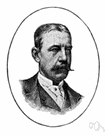news·pa·per·wom·an
(no͞oz′pā′pər-wo͝om′ən, nyo͞oz′-)n.
1. A woman who owns or publishes a newspaper.
2. A woman who is a newspaper reporter, writer, or editor.
American Heritage® Dictionary of the English Language, Fifth Edition. Copyright © 2016 by Houghton Mifflin Harcourt Publishing Company. Published by Houghton Mifflin Harcourt Publishing Company. All rights reserved.
newspaperwoman
(ˈnjuːzˌpeɪpəˌwʊmən)n, pl -women
1. (Journalism & Publishing) a woman who works for a newspaper as a reporter or editor
2. (Journalism & Publishing) the female owner or proprietor of a newspaper
3. (Journalism & Publishing) a woman who sells newspapers in the street
Collins English Dictionary – Complete and Unabridged, 12th Edition 2014 © HarperCollins Publishers 1991, 1994, 1998, 2000, 2003, 2006, 2007, 2009, 2011, 2014
news•pa•per•wom•an
(ˈnuzˌpeɪ pərˌwʊm ən, ˈnyuzˌpeɪ-, ˈnusˌpeɪ-, ˈnyusˌpeɪ-)n., pl. -wom•en.
1. a woman employed by a newspaper or wire service as a reporter, writer, or editor.
2. a woman who owns or operates a newspaper or news service.
[1880–85]
usage: See -woman.
Random House Kernerman Webster's College Dictionary, © 2010 K Dictionaries Ltd. Copyright 2005, 1997, 1991 by Random House, Inc. All rights reserved.
ThesaurusAntonymsRelated WordsSynonymsLegend:
| Noun | 1. |  newspaperwoman - a journalist employed to provide news stories for newspapers or broadcast media newspaperwoman - a journalist employed to provide news stories for newspapers or broadcast mediaforeign correspondent - a journalist who sends news reports and commentary from a foreign country for publication or broadcast journalist - a writer for newspapers and magazines war correspondent - a journalist who sends news reports and commentary from a combat zone or place of battle for publication or broadcast |
Based on WordNet 3.0, Farlex clipart collection. © 2003-2012 Princeton University, Farlex Inc.